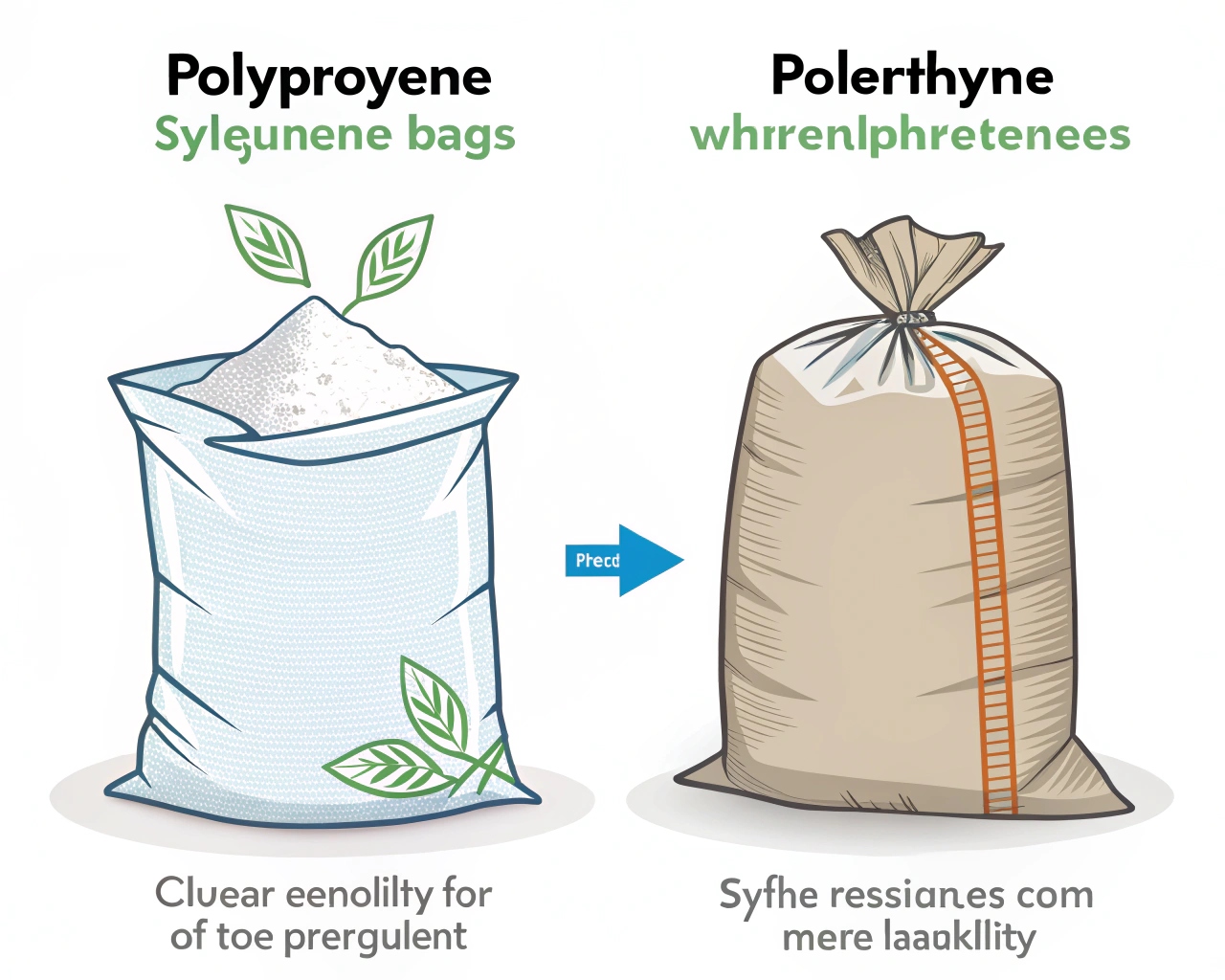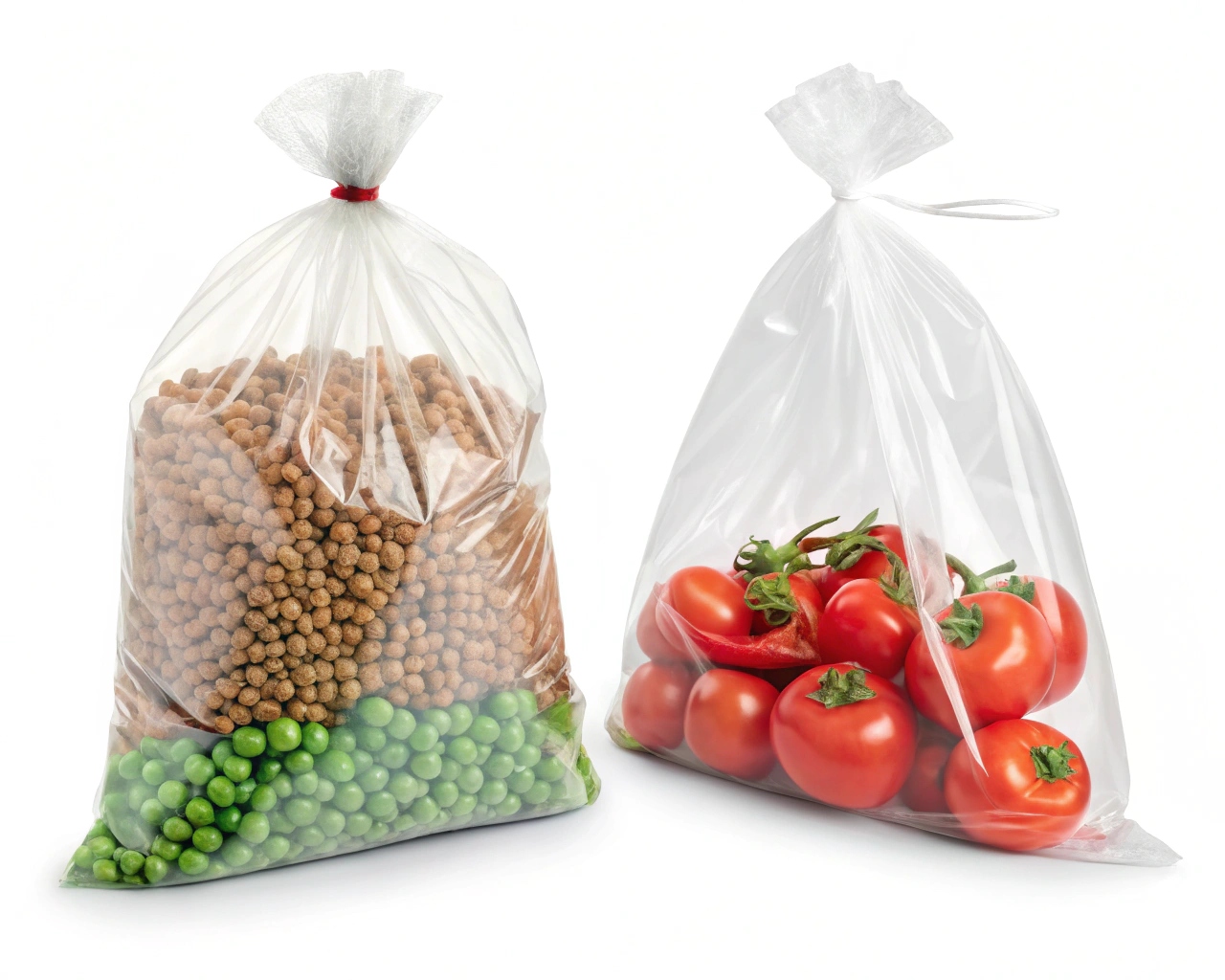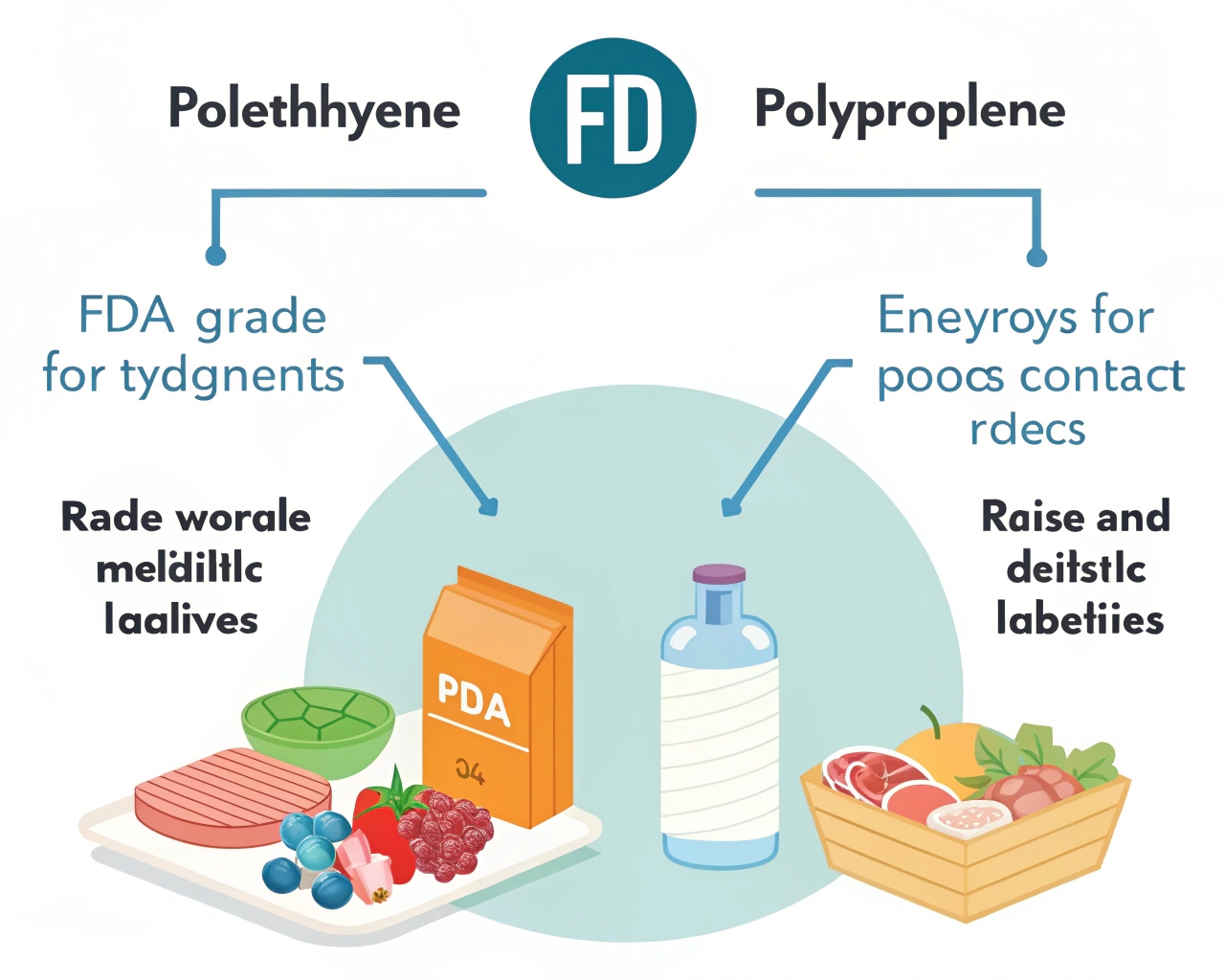Struggling to pick the perfect plastic bag? Confused by the endless options? Let’s break it down.
Polypropylene and polyethylene bags both offer durability and versatility, but differ in texture, clarity, and heat resistance. Polypropylene is stiffer, clearer, and withstands higher temperatures, while polyethylene is more flexible and resistant to chemicals.

Choosing between polypropylene and polyethylene can be tricky, but it doesn’t have to be. Let’s dive in and find the perfect choice.
Which is better polypropylene or polyethylene plastic bags?
Wondering which bag material reigns supreme? Overwhelmed by the technical jargon? You are not alone!
The "better" bag depends on your needs. Polypropylene is great for showcasing contents with its clarity and resists heat well. Polyethylene excels in flexibility and chemical resistance, making it ideal for varied uses.

Dive deeper into the distinct characteristics. Considering factors in a structured method helps us make effective buying decisions. Let’s look closer at these different options:
Polypropylene1 (PP)
- Clarity: PP bags often have a higher clarity, making them suitable for retail packaging where product visibility is essential.
- Stiffness: PP is generally stiffer than PE, giving the bags a more rigid structure.
- Heat Resistance: PP has a higher melting point, making it suitable for containing hot-filled products.
Polyethylene2 (PE)
- Flexibility: PE bags are more flexible and less prone to cracking under stress, especially low-density polyethylene (LDPE).
- Chemical Resistance: PE offers good resistance to a wide range of chemicals.
- Cost: PE is typically more cost-effective than PP.
| Feature | Polypropylene (PP) | Polyethylene (PE) |
|---|---|---|
| Clarity | Higher | Lower (can be translucent or opaque) |
| Stiffness | Stiffer | More flexible |
| Heat Resistance | Higher melting point | Lower melting point |
| Chemical Resist | Good, but less than PE | Excellent |
| Flexibility | Less flexible | More flexible, especially LDPE |
| Cost | Generally more expensive | Typically more cost-effective |
| Common Uses | Retail, food (hot items), medical | Industrial, food (general), trash liners |
What is safer, polyethylene or polypropylene?
Concerned about safety with plastic bags? Want to make the most responsible choice? It’s a valid question.
Both polyethylene and polypropylene are generally considered safe for food contact. The FDA approves both materials. However, specific additives in some plastics can raise concerns, so look for "food-grade" labeling.

Dive deeper into the safety considerations. To make an informed choice, it’s important to break down the safety aspects of each material:
Polyethylene (PE) Safety
- Food Contact: Generally considered safe, and widely used for food packaging. LDPE and HDPE are common.
- Chemical Leaching: Minimal risk under normal use. Avoid extreme heat.
- Recyclability: HDPE (#2) and LDPE (#4) are often recyclable. Check local guidelines.
Polypropylene (PP) Safety
- Food Contact: Also generally considered safe for food. Often used for yogurt containers, etc.
- Heat Stability: Better heat resistance3 means less risk of chemical leaching at higher temperatures.
- Recyclability: PP (#5) is recyclable, but less commonly accepted than PE.
Both materials are safe for food contact, PP offers better heat resistance, and both materials are often recyclable.
What are the advantages of polypropylene over polyethylene?
Is polypropylene always the superior choice? Feeling pressured to choose the "best" option? Let’s check facts.
Polypropylene’s main advantages are its higher clarity, stiffness, and better heat resistance. This makes it ideal for retail packaging and situations where contents need to withstand higher temperatures without deforming the bag.

Dive deeper into the specific advantages. Let’s look at where polypropylene really shines:
Superior Clarity
- Retail Display: PP’s clarity makes products more visible, enhancing presentation.
- Branding: Clearer bags allow for better visibility of printed logos and designs.
Increased Stiffness
- Shape Retention: PP bags hold their shape better, providing a more structured feel.
- Easier Filling: The rigidity can make filling and handling easier in some applications.
Higher Heat Resistance
- Hot-Filled Products: PP can withstand higher temperatures without melting or deforming.
- Microwave Use: Some PP containers are microwave-safe (check for specific labeling).
- Sterilization:PP is resistant to high temperatures and can be used for sterilization.
These advantages show that PP is a good choice.
Why should we avoid using polythene bags?
Hearing a lot of negativity about polythene? Concerned about environmental impact? It’s time to address this.
Polythene (polyethylene) bags contribute to plastic pollution. Because they take a long time to break down. Their lightweight nature also means they often end up as litter, harming wildlife and ecosystems.

Dive deeper into the reasons for avoiding polythene. Here’s a breakdown of the key issues:
Environmental Persistence
- Slow Decomposition: Polythene bags can take hundreds of years to decompose.
- Landfill Accumulation: They contribute significantly to landfill waste.
Wildlife Impact
- Entanglement: Animals can become entangled in plastic bags, leading to injury or death.
- Ingestion: Animals may mistake bags for food, causing digestive blockages and starvation.
Pollution
- Litter: Lightweight bags are easily blown away, becoming unsightly litter.
- Microplastics: As bags break down, they release microplastics, which can contaminate soil and water.
- Recycling Challenges:Not all recycling facilities will accept plastic bags.
The environmental persistence, wildlife impact, and pollution show why we need to reduce polythene bags.
Conclusion
Polypropylene and polyethylene both offer benefits. Your best choice depends on your needs. Choose wisely!
-
Explore the advantages of Polypropylene bags, including their clarity and heat resistance, to make an informed choice for your needs. ↩
-
Learn about the environmental concerns associated with Polyethylene bags and why reducing their use is crucial for sustainability. ↩
-
Understanding the heat resistance of these materials can help you choose the right bag for hot items and ensure safety. ↩

